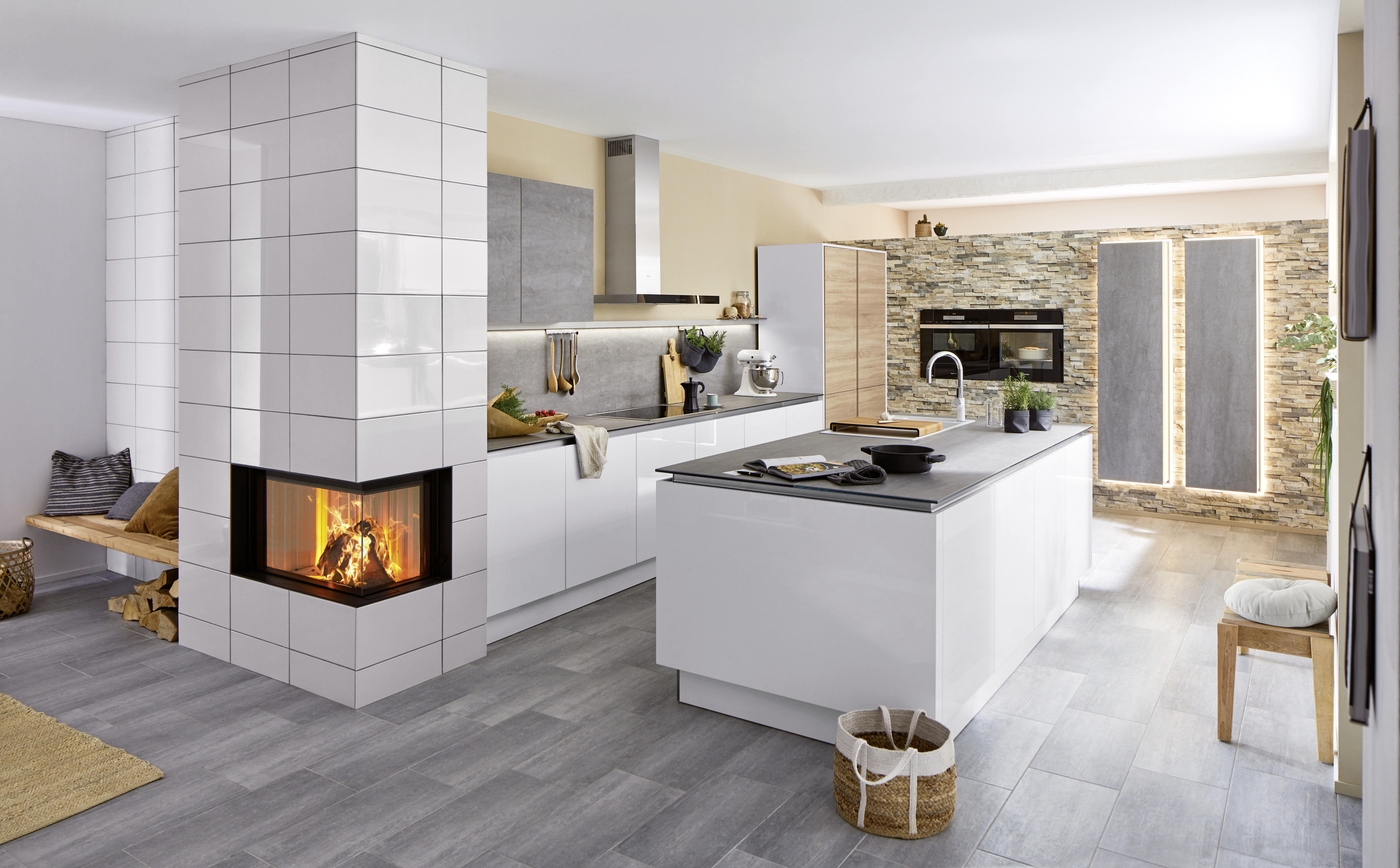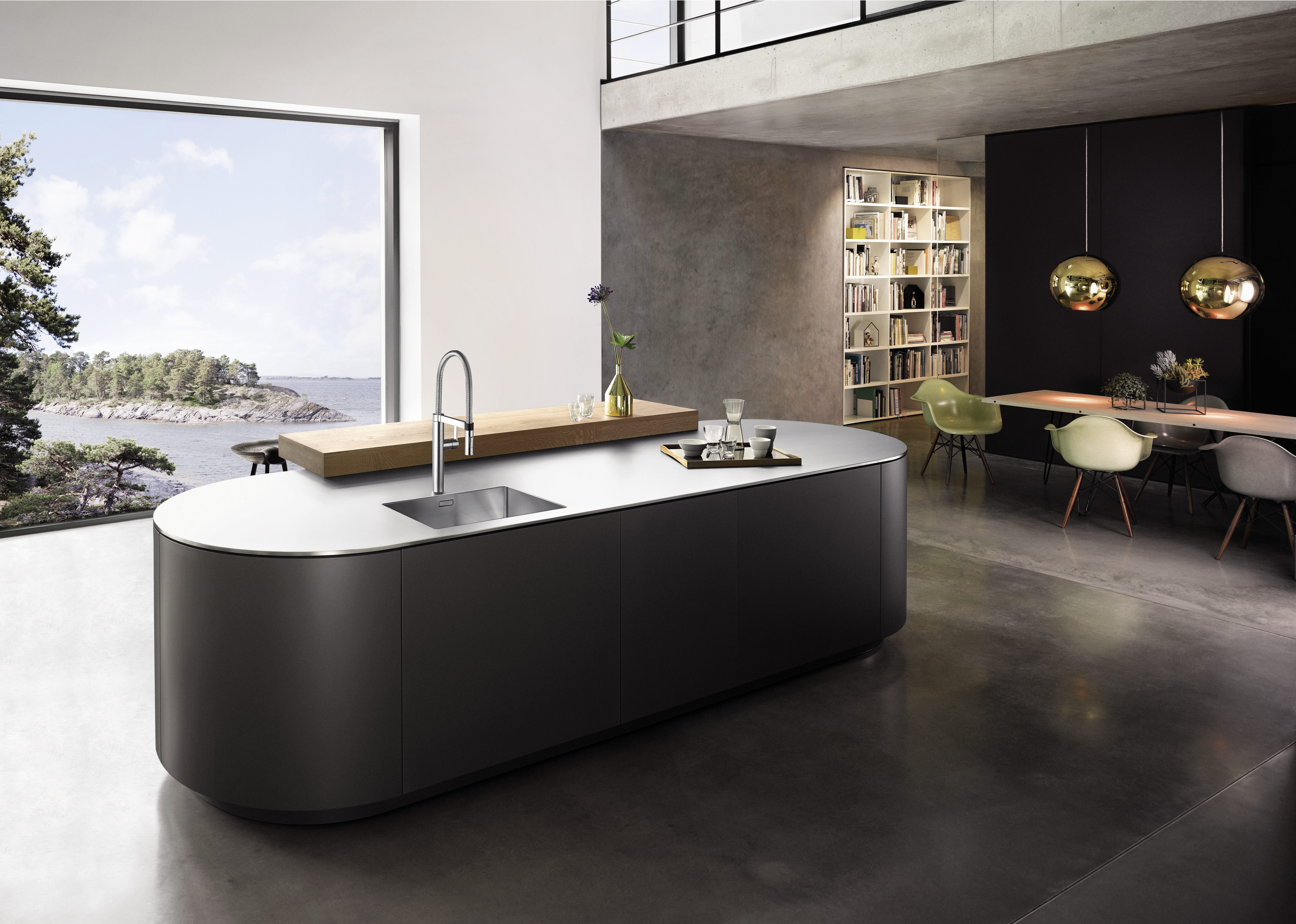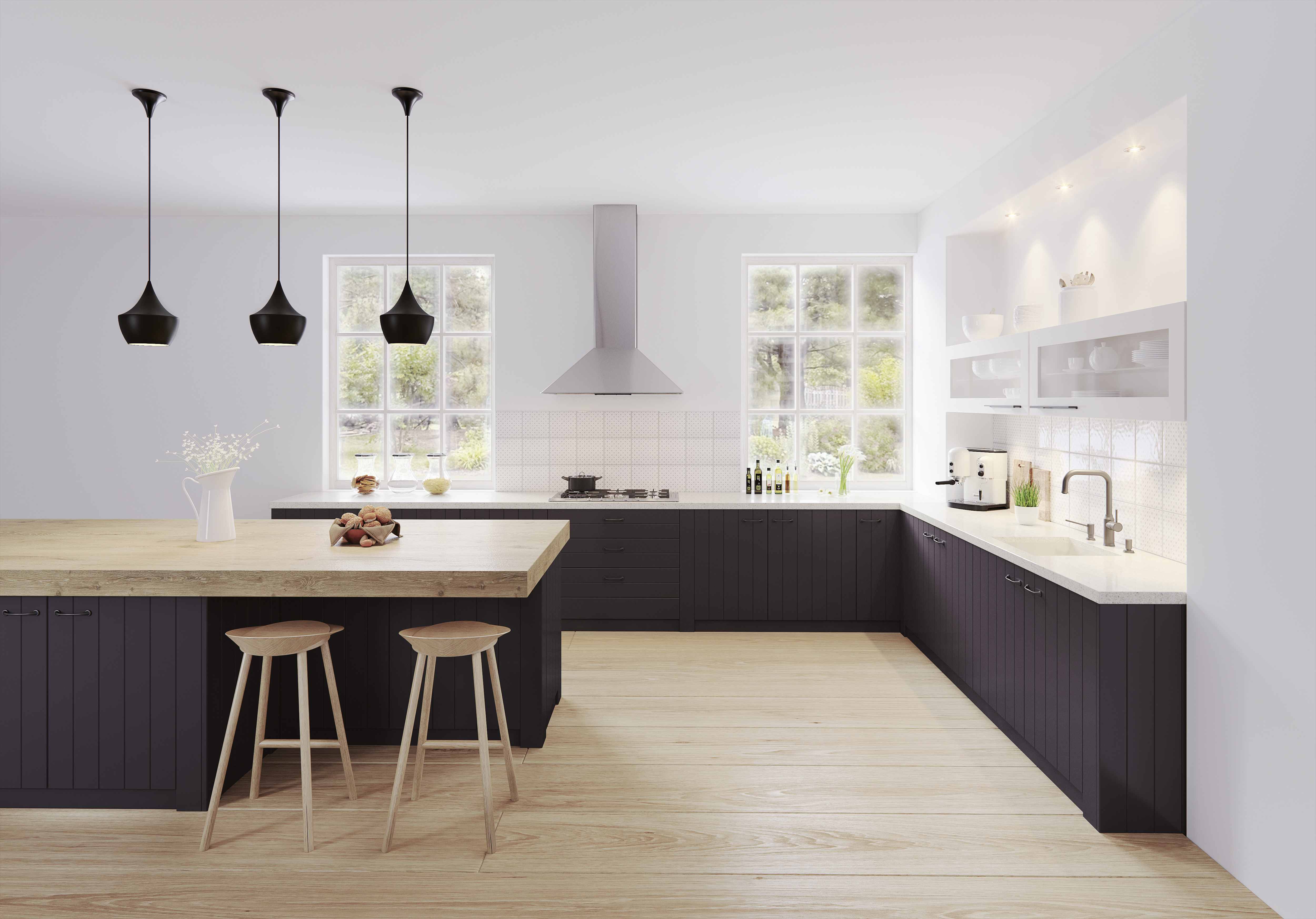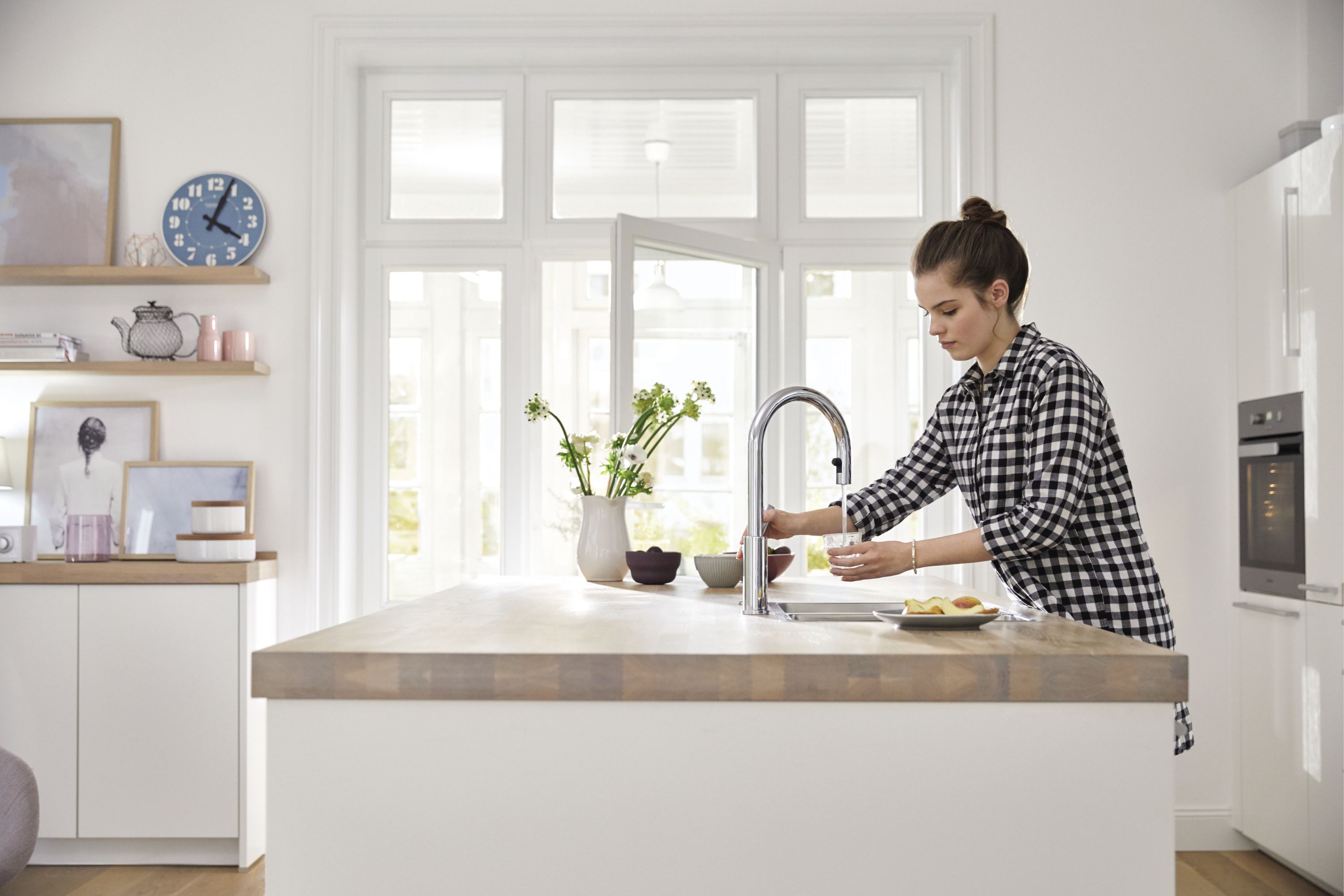The new kitchen island
with or preferably without a sink?

Planning the kitchen
The kitchen is increasingly being planned as the hub of family life in the home. Lots of people flirt with the idea of a kitchen island. This popular solution for open-plan kitchens promises the option of communicating with others while you cook, so it is often also called a cooking island. When going into greater detail at the planning stage, the question often arises as to which is better, having the cooktop on the cooking island, or the sink?

Have you checked whether there’s enough room for the kitchen island?
There’s no blanket answer to the best kitchen island solution. For every individual case, you should check carefully what the room concept looks like. First and foremost, this includes determining whether the room has enough space for a free-standing island at all. Some kitchen planners work on the basis of a room size of at least 15 square metres. You are advised not to include a kitchen island in your plans if the space is smaller.

Routes around a kitchen island
Things become clearer if you look at the routes that will be taken around the kitchen island. The fold-down doors of dishwashers or larders should leave 1.2 metres of free space, so that it’s easy to walk in front of them when open. Seating also requires a certain amount of space. All other distances around the cooking island should be at least 1 metre.
Getting the right size for your cooking island
The size of the kitchen island is also a key factor in what is best to put here. You need to provide enough space for it to be used as a workstation, regardless of whether you’re going to cook there or prepare food at the sink. The lower cabinets of the kitchen island will determine its width, based on the unit dimensions. If you put two 60-cm cabinets together, you get an island width of 120 cm. Opting for 90-cm cabinets gives you a total width of 180 cm, and so on.

The cooking island under the spotlight
Cosy lighting is essential for a homely atmosphere in the kitchen. When it comes to light, it’s all about finding the right mix. On the one hand, for practical purposes lighting needs to make cooking and chopping food easier, while on the other you want the light to create the right atmosphere at the dining table or when having a sociable drink at the kitchen island. The first thing to sort out is the basic lighting for your kitchen. The tried and tested options are ceiling spots or light strips that can go up to a brightness of around 150 LUX. The spotlights, which can be positioned on the workstations, should be downlights, so that they cast even light onto ingredients when preparing food, without any shadows.

A key consideration: line of sight
One key consideration when pondering an island solution is the line of sight within an open-plan kitchen. Anyone planning a kitchen as an open-plan space is going to be keen on actively encouraging family life, even if they’re the one actually preparing the meals. The option of facing outward when working at a cooking island offers precisely that convenience.
Having a sink on the cooking island is often the best solution
When planning an island, it’s worth looking at your cooking habits. Where do you prepare ingredients for meals? If you use plenty of fresh ingredients, then you’re going to be spending a lot of your preparation time at the sink, as the waste and compost bin tend to be housed in the base cabinet, and there’s generally a space for chopping things right beside the sink. The one downside to this solution is that if dirty dishes soon start piling up beside the sink, they’re impossible to hide. Having to look at used coffee cups or big pots isn’t particular pleasant. When putting your plans together, look at your circumstances and also your cooking behaviour, as only considering both aspects will allow you to identify the best solution.
